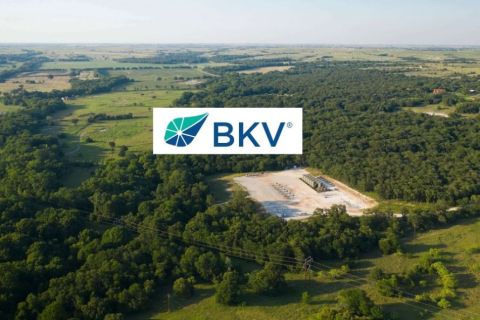When the definitive textbook on successful oil and gas plays gets written, at least a chapter should be devoted to the Barnett Shale. It’s the classic oilfield yarn – a vast amount of natural gas tied up in confounding shale, requiring the derring-do of a few companies willing to experiment until they find the way to crack the code.
Cracking, in fact, is one of the keys to producing shale reservoirs like the Barnett, as is horizontal drilling. Multi-stage fracturing creates several “mini-wells” within a single wellbore, increasing production significantly, and simultaneous fracturing prevents a well being fractured from killing nearby producing wells. The results speak for themselves – Devon Energy Corp. just drilled a well in East Texas that is producing 31 MMcfd, one of the most prolific wells drilled in the US this year.
While no operator is going to complain about this level of production, the fact that new technology applications are creating these super wells is creating a supply-demand imbalance that is keeping natural gas prices low. A recent Wall Street Journal article said that the expected production cutback simply hasn’t happened, despite the fact that companies began stacking rigs in the shale plays earlier this year. In addition to the Devon well, Chesapeake Energy Corp. and Anadarko Petroleum Corp. reported large increases in gas production despite a reduction in spending (and profits).
According to the article, Jon Wolff, an energy analyst with Credit Suisse, said that production has remained high because companies are only drilling in the most productive areas and can demand the best technology and personnel from service companies needing the contracts. Easier credit and somewhat higher prices will probably encourage companies to increase drilling activity, he added.
Analysts at Tudor Pickering disagree, maintaining that the production uptick in August was “a fluke” and predicting higher gas prices in 2010. And Aubrey McClendon, chairman of Chesapeake, told investors during a conference call that it takes time for reduced drilling activity to have an impact on supplies. “Gas production will be down significantly in the months and quarters ahead,” he said.
According to the Baker Hughes rig count, natural gas drilling in the US has fallen 53% in the past year.
Natural gas is currently hovering just below US $5 per Mcf, about double what it was earlier this year. While I’ve not seen metrics regarding the minimum price needed to make shale plays economic, the fact is that operators are drilling shale wells faster and cheaper than ever before. It will be interesting to see whether or not they can curb their enthusiasm.
Recommended Reading
BKV Prices IPO at $270MM Nearly Two Years After First Filing
2024-09-25 - BKV Corp. priced its common shares at $18 each after and will begin trading on Sept. 26, about two years after the Denver company first filed for an IPO.
CSW Increases Common Stock Offering to Repay Debt
2024-09-05 - CSW Industries increased its offering of common stock from 1 million shares to 1.1 million shares at $285 per share.
Viper Energy Offers 10MM Shares to Help Pay for Permian Basin Acquisition
2024-09-12 - Viper Energy Inc., a Diamondback Energy subsidiary, will use anticipated proceeds of up to $476 million to help fund a $1.1 billion Midland Basin deal.
After BKV’s IPO, Is Market Open to More Public SMID Caps?
2024-10-03 - The market for new E&P and energy IPOs has been tepid since the COVID-19 pandemic. But investor appetite is growing for new small- and mid-sized energy IPOs, says Citigroup Managing Director Dylan Tornay.
Cibolo Energy Closes Fund Aimed at Upstream, Midstream Growth
2024-09-10 - Cibolo Energy Management LLC closed its second fund, Cibolo Energy Partners II LP, meant to boost middle market upstream and midstream companies’ growth with development capital.





